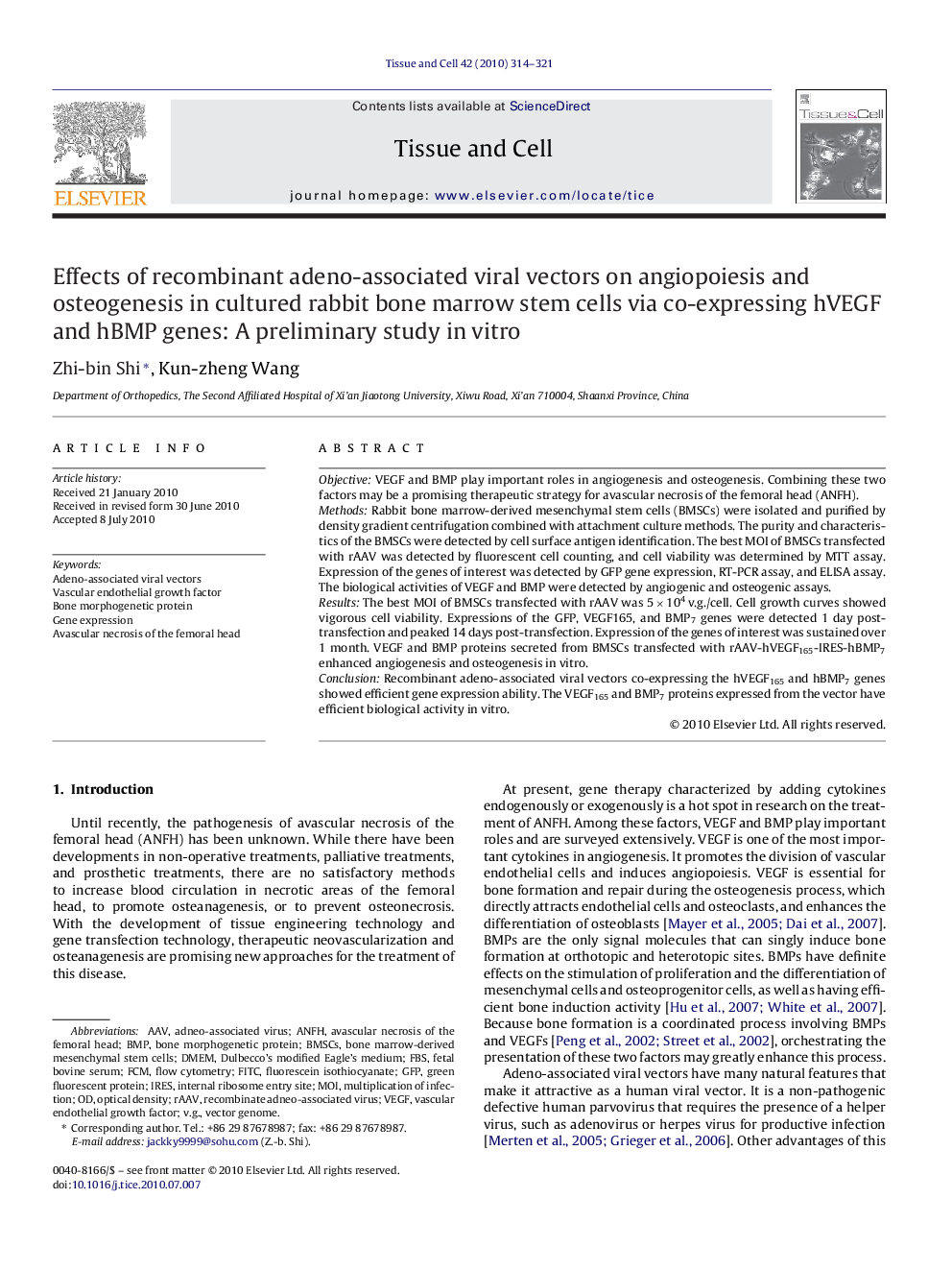| Article ID | Journal | Published Year | Pages | File Type |
|---|---|---|---|---|
| 2203950 | Tissue and Cell | 2010 | 8 Pages |
ObjectiveVEGF and BMP play important roles in angiogenesis and osteogenesis. Combining these two factors may be a promising therapeutic strategy for avascular necrosis of the femoral head (ANFH).MethodsRabbit bone marrow-derived mesenchymal stem cells (BMSCs) were isolated and purified by density gradient centrifugation combined with attachment culture methods. The purity and characteristics of the BMSCs were detected by cell surface antigen identification. The best MOI of BMSCs transfected with rAAV was detected by fluorescent cell counting, and cell viability was determined by MTT assay. Expression of the genes of interest was detected by GFP gene expression, RT-PCR assay, and ELISA assay. The biological activities of VEGF and BMP were detected by angiogenic and osteogenic assays.ResultsThe best MOI of BMSCs transfected with rAAV was 5 × 104 v.g./cell. Cell growth curves showed vigorous cell viability. Expressions of the GFP, VEGF165, and BMP7 genes were detected 1 day post-transfection and peaked 14 days post-transfection. Expression of the genes of interest was sustained over 1 month. VEGF and BMP proteins secreted from BMSCs transfected with rAAV-hVEGF165-IRES-hBMP7 enhanced angiogenesis and osteogenesis in vitro.ConclusionRecombinant adeno-associated viral vectors co-expressing the hVEGF165 and hBMP7 genes showed efficient gene expression ability. The VEGF165 and BMP7 proteins expressed from the vector have efficient biological activity in vitro.
